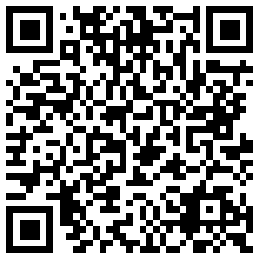AFTER SALES SERVICE
After sales service
Fault and elimination
- Categories:Service
- Time of issue:2019-07-01 00:00:00
- Views:0
Description:
Information
Because chain drive is widely used, manufacturers and users often wear friction on quality problems. How to identify the quality problem is the key to solving the problem. Therefore, this paper analyzes and discusses the problems that occur in the common chain drive use process. And proposed its solution for the reference of the various chain manufacturers and users.
First, the lubrication of the chain drive
Proper lubrication of any chain drive requires proper lubrication. The wear and fatigue of the chain, the wear and corrosion of the sprocket, the inflexibility of the chain link or the tightness of the hinge are all related to lubrication. If the chain wears faster, the pin shaft changes color and the operation is not stable, indicating that the chain is insufficiently lubricated. Under normal circumstances, the following lubricants are recommended: temperature 200 & mdash; 400C uses No. 20 oil, 400 & mdash; 1000C uses No. 30 oil, 1000-1200C uses No. 40 oil, and 1200-1400C uses No. 50 oil. The lubrication method can be manual. The brush or oil can be lubricated with oil. The environment requires a chain with a casing that should be lubricated with either shallow oil or drip. If the working temperature exceeds 3000C and cannot be lubricated with petroleum, it is effective to use a solution in which colloidal graphite is dispersed in carbon tetrachloride or white kerosene.
Second, the chain drive faults and troubleshooting
1. The parallelism of the front and rear axes and the coplanarity of the sprocket
For wear life, the performance of the chain depends to a large extent on the correct installation of the front and rear axles and sprocket. The requirement is that the parallelism of the front and rear axles is within 1/300. The coplanarity of the front and rear wheels is 0.5 & mdash; 1.0 mm / m. If the chain finds the above problems during operation, it should be adjusted in time.
2. Chain tension
The tension of the chain is related to the sag distance of the chain. For horizontal and inclined transmissions with adjustable center-to-center distance, the sag of the chain's loose edge should be 2% of the centerline. The centerline is vertically driven or subjected to shock loads, and the reverse drive should make the chain more tensioned.
3. Chain and sprocket cooperation
If the chain does not fit well with the sprocket, the chain hinge may be worn and the pitch is elongated. If there is a tooth skipping phenomenon, the chain should be replaced in time. If the sprocket wears out, replace it to avoid damaging the new chain.
4. Chain jitter
The reason for chain jitter is that the chain is too loose, the load is too large, or one or more links are not flexible. The solution is to install a chain tensioner or an adjustable center distance. Reduce the load if possible.
5. Chain running noise is too large
The reason for the excessive noise is that the sprocket is not coplanar; the chain is too tight or too small; the lubrication is insufficient; the chain and the sprocket are worn; or the chain pitch is too large. The solution is to check the front and rear axis parallel and the sprocket coplanarity to correct. Adjust the center distance and tensioning device to achieve proper tightness and ensure lubrication to the workpiece.
6. Chain side grinding
If the inner surface of the inner link chain plate is severely worn, it indicates that the drive is not aligned. The solution is to check the alignment of the shaft and sprocket. If there is no problem with the installation, it is possible to check whether there is insufficient rigidity due to excessive load deformation during operation.
7. Chain plate fatigue
When the load is too large to exceed the fatigue limit of the link plate, the chain plate undergoes fatigue damage, and micro cracks are generated around the hole until it breaks. The solution is to reduce the load or replace the chain with a large carrying capacity.
8. Pin wear
Usually pin wear is caused by insufficient lubrication. Always check the lubricant for abrasives or change the lubrication.
9. Pin gluing
Pinning is generally caused by insufficient oil supply. If only one end is glued, check the shaft and sprocket installation, whether the shafts are parallel, whether the sprocket is coplanar, and whether the shaft and sprocket are moving during operation.
10. Sprocket tooth wear
If the sprocket teeth have significant wear on both sides, the drive alignment is not good.
If the resulting "curved groove" indicates that the sprocket should be replaced by excessive wear, the sprocket can also be reversed so that the lighter one faces the chain. The excessively worn sprocket is preferably replaced with the chain.
The above ten are the problems often encountered in the chain drive process. If you clarify the above problems, it will be beneficial to both the chain manufacturer and the manufacturer. It can reduce the dispute between the manufacturer and the manufacturer and make each other more pleasant cooperation.
Scan the QR code to read on your phone
Lin'an Gelin Transportation Machinery Equipment Factory
Add Industrial Zone, Hengyu Town (Yaguan Village), Lin'an City, Zhejiang Province
Tel:+86-571-63773958
Email:lagelin@126.com
Fax:+86-571-63773938
Customer message
Description:
2019 All Rights Reserved Lin'an Gelin Transportation Machinery Equipment Factory 浙ICP备11009605号 Powered by www.300.cn
- 2019 All Rights Reserved临安格林输送机械设备厂 浙ICP备0000000号 网站建设:中企动力 杭州


